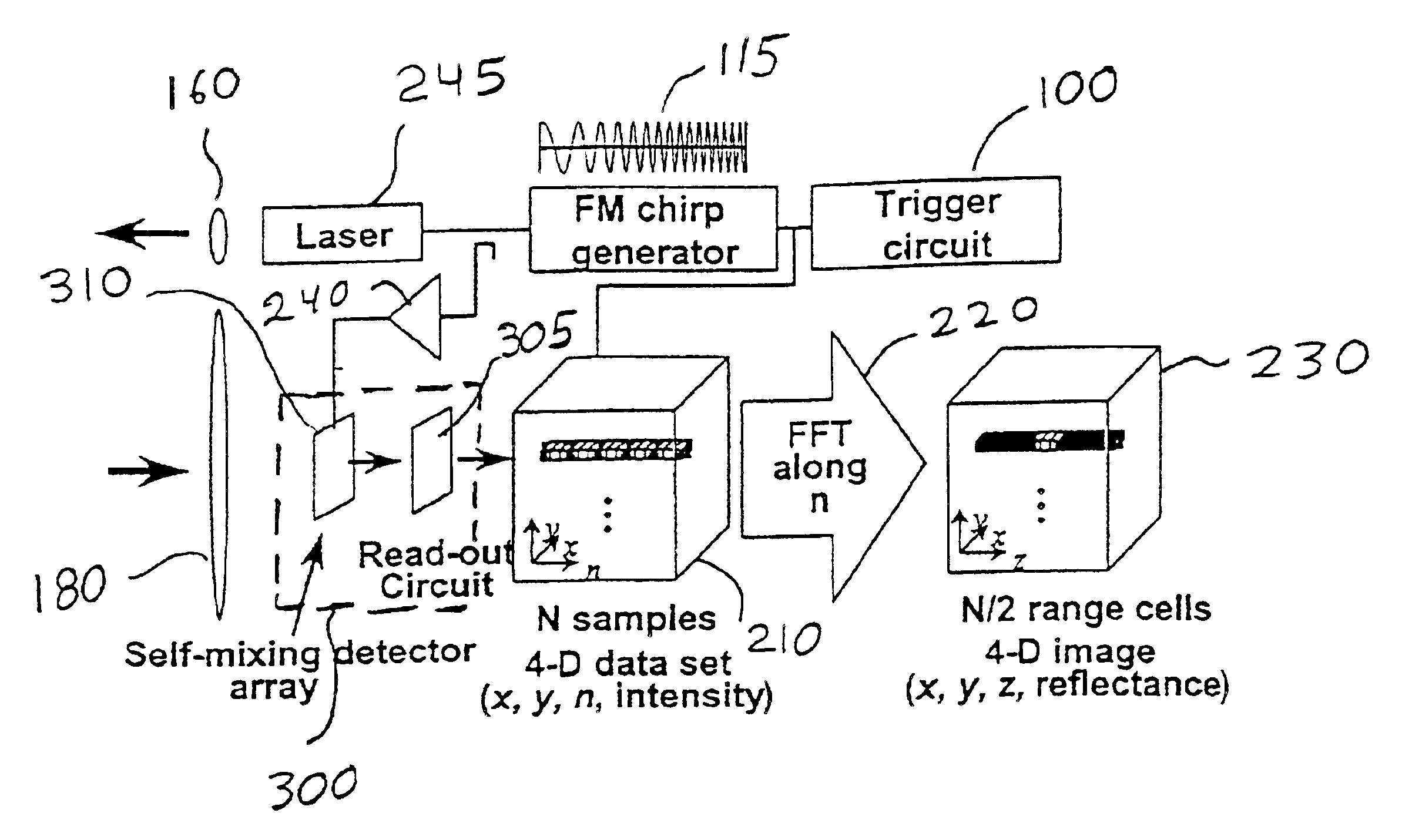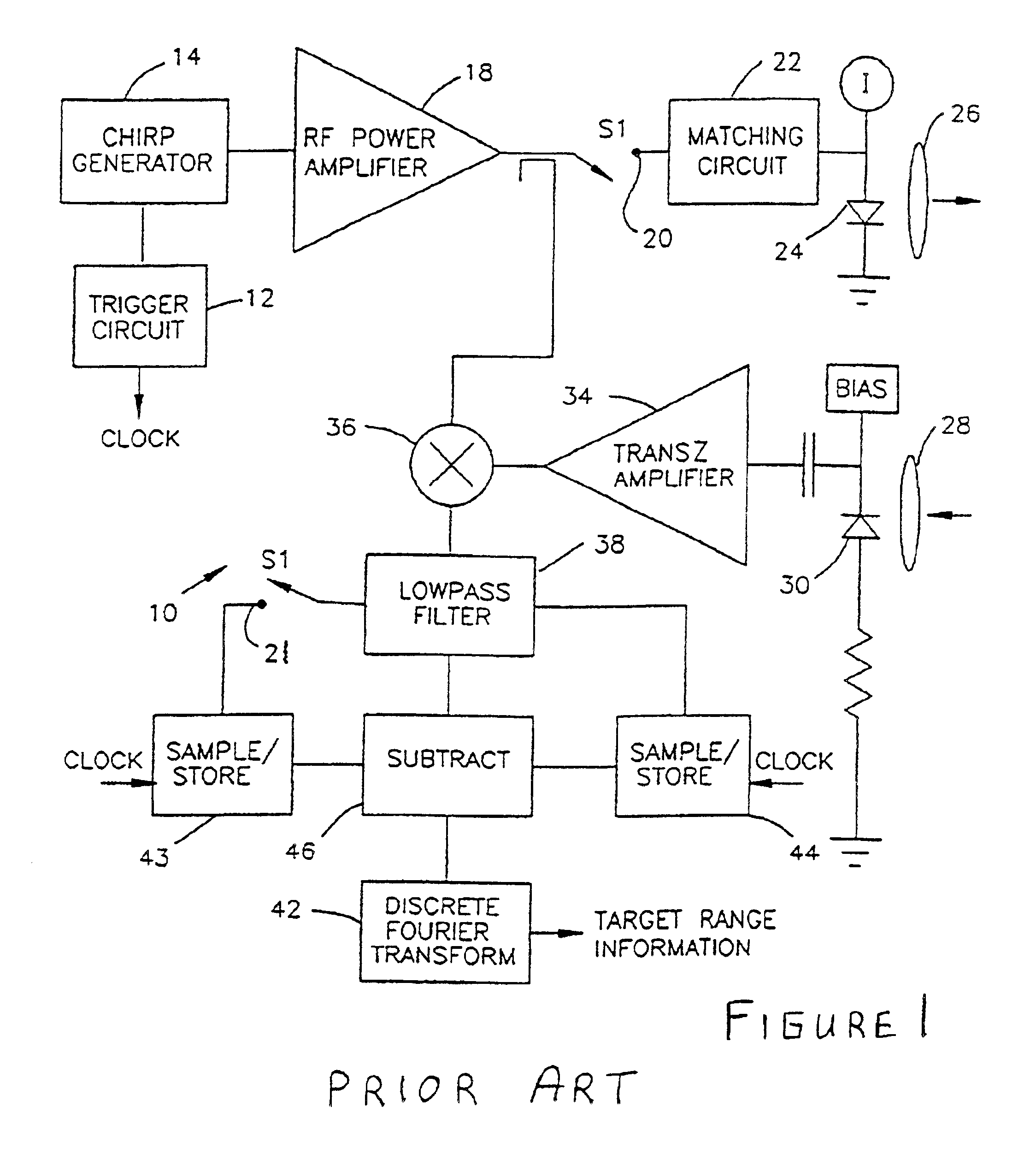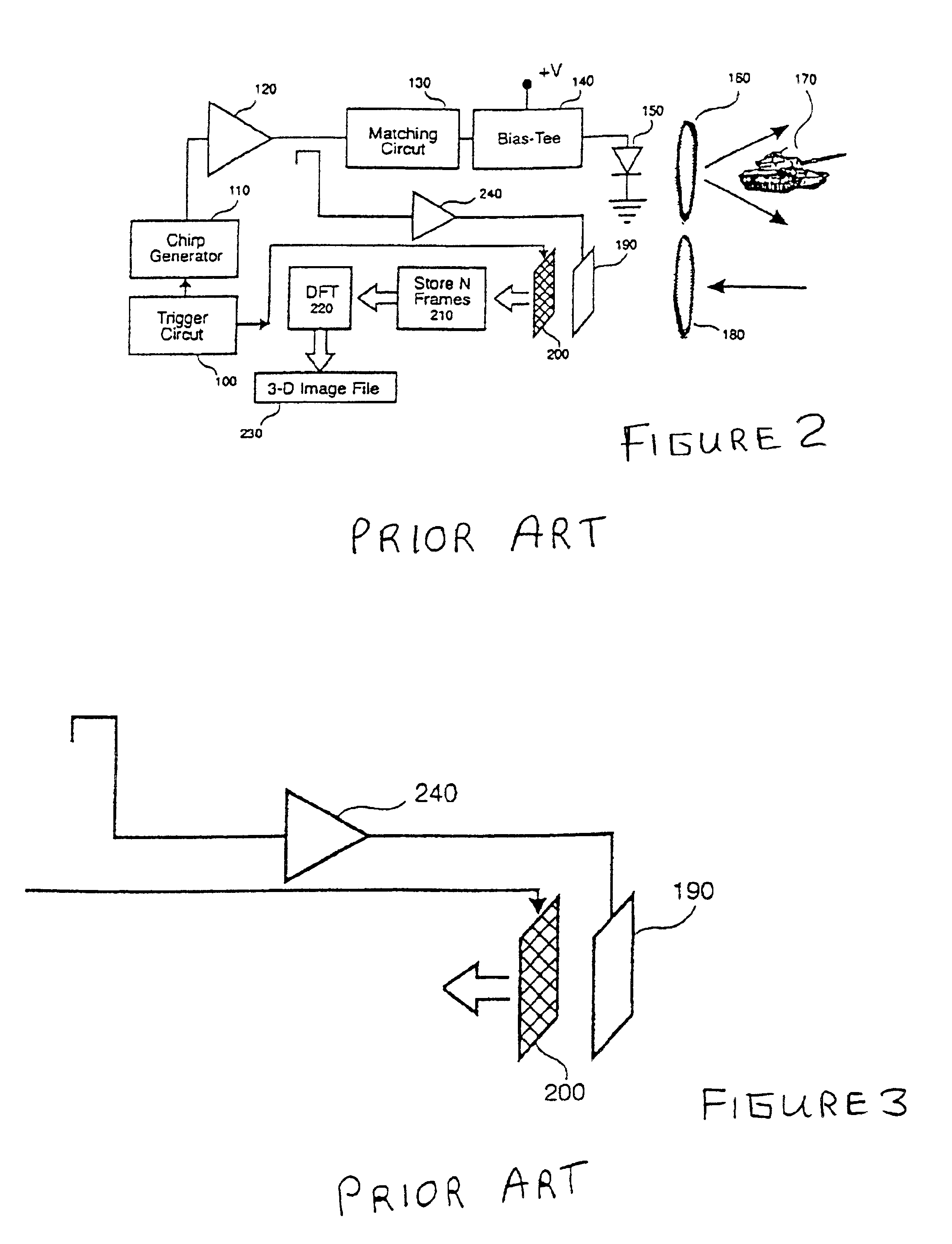Ladar system for detecting objects
a laser system and object technology, applied in the field of laser detection and ranging (ladar) systems, can solve the problems of adding system complexity, separating electro-optic light modulators, etc., and achieve the effects of high resolution and target imaging, convenient adaptation, and efficient assembly
- Summary
- Abstract
- Description
- Claims
- Application Information
AI Technical Summary
Benefits of technology
Problems solved by technology
Method used
Image
Examples
Embodiment Construction
Referring now to FIG. 1 of the drawings, there is generally shown a block diagram of a ladar architecture disclosed in U.S. Pat. No. 5,608,514 ('514 patent). The architecture includes a trigger circuit 12 which activates a chirp generator 14 for producing a signal with a frequency that increases linearly as a function of time over a period of time, T. The chirp signal is fed through a wideband RF power amplifier 18 to a matching circuit 22 that matches the driving impedance of the amplifier to the impedance of a laser diode 24.
Laser diode 24 converts the chirp current waveform into a light waveform with power proportional to the driving current. This divergent laser light beam is collected by a first lens 26, collimated and directed toward a target. The small portion of transmitted light that is reflected by the target and propagated back to the ladar is collected by a second lens 28 and focused onto the active detection region of a photodiode 30. Photodiode 30 converts the collecte...
PUM
 Login to View More
Login to View More Abstract
Description
Claims
Application Information
 Login to View More
Login to View More - R&D
- Intellectual Property
- Life Sciences
- Materials
- Tech Scout
- Unparalleled Data Quality
- Higher Quality Content
- 60% Fewer Hallucinations
Browse by: Latest US Patents, China's latest patents, Technical Efficacy Thesaurus, Application Domain, Technology Topic, Popular Technical Reports.
© 2025 PatSnap. All rights reserved.Legal|Privacy policy|Modern Slavery Act Transparency Statement|Sitemap|About US| Contact US: help@patsnap.com



